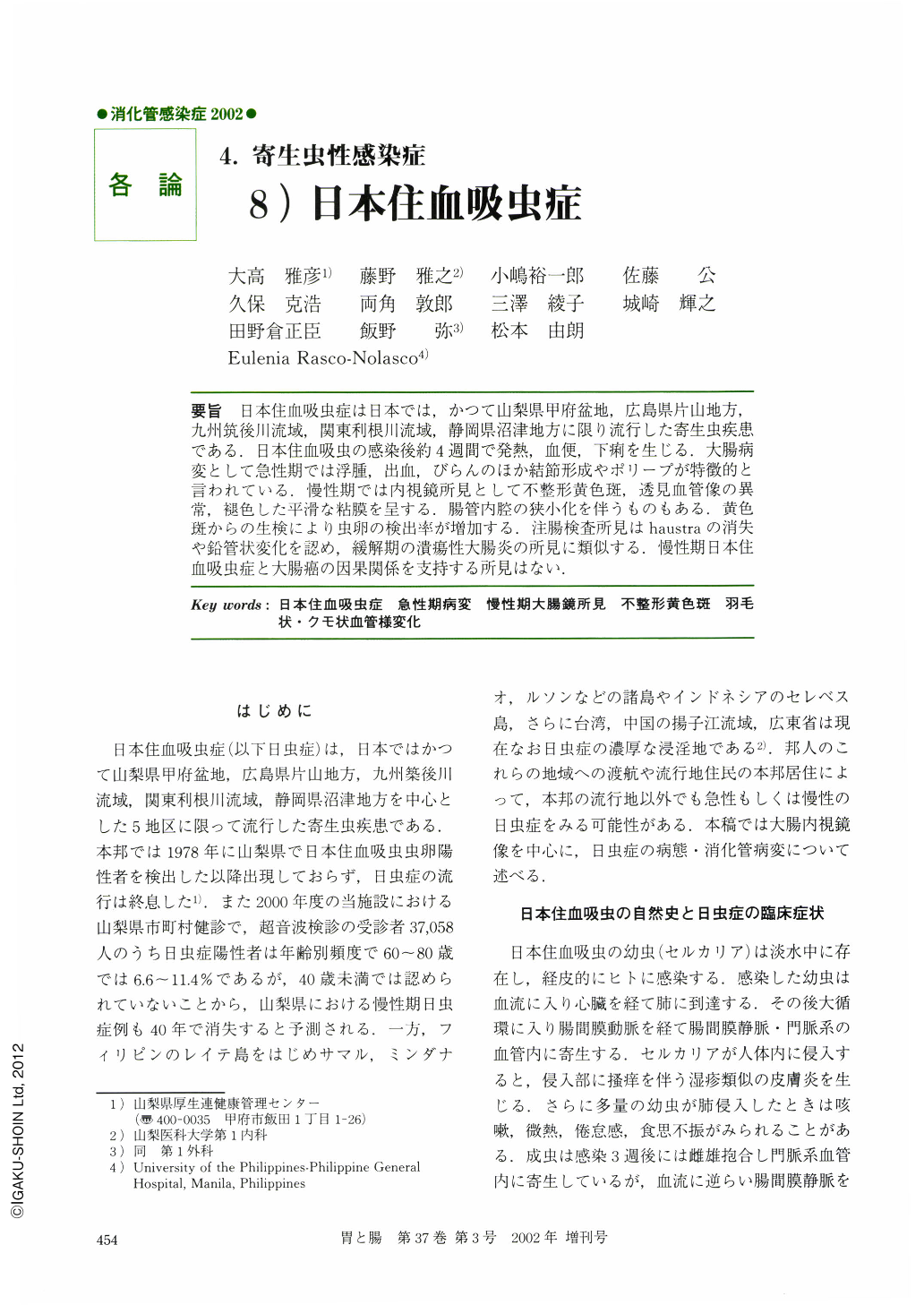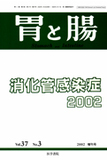Japanese
English
- 有料閲覧
- Abstract 文献概要
- 1ページ目 Look Inside
- サイト内被引用 Cited by
要旨 日本住血吸虫症は日本では,かつて山梨県甲府盆地,広島県片山地方,九州筑後川流域,関東利根川流域,静岡県沼津地方に限り流行した寄生虫疾患である.日本住血吸虫の感染後約4週間で発熱,血便,下痢を生じる.大腸病変として急性期では浮腫,出血,びらんのほか結節形成やポリープが特徴的と言われている.慢性期では内視鏡所見として不整形黄色斑,透見血管像の異常,褪色した平滑な粘膜を呈する.腸管内腔の狭小化を伴うものもある.黄色斑からの生検により虫卵の検出率が増加する.注腸検査所見はhaustraの消失や鉛管状変化を認め,緩解期の潰瘍性大腸炎の所見に類似する.慢性期日本住血吸虫症と大腸癌の因果関係を支持する所見はない.
Schistosomiasis japonica is an infectious disease caused by Schistosoma japonica. In old times, this parasite was prevalent in five restricted regions in Japan. Foci are present in China, Taiwan, the Philippines, and the Celebes. Acute schistosomiasis and schistosomal intestinal disease usually cause diarrhea with blood and mucus. The endoscopic appearance is one of patchy mucosal congestion with petechia and erosions or ulcerations throughout the rectum and colon. The presence of inflammatory polypoid lesions marked by whitish surface exudates is specific. Endoscopic colorectal findings during chronic schistosomiasis japonica were characterized by the presence of various mucosal changes, either alone or associated with narrowing of the lumen. Typical mucosal changes were irregular yellow spots that coincided with the foci of ova, feathershaped or spider-like abnormal vascular pattern, and atrophic and smooth mucosa. Barium enema findings included disappearance of haustra and lead-pipe-like changes. Diffuse lesions were very similar to the appearance of ulcerative colitis in remission. No definite conclusion about the carcinogenicity of chronic schistosomiasis japonica was available.

Copyright © 2002, Igaku-Shoin Ltd. All rights reserved.


